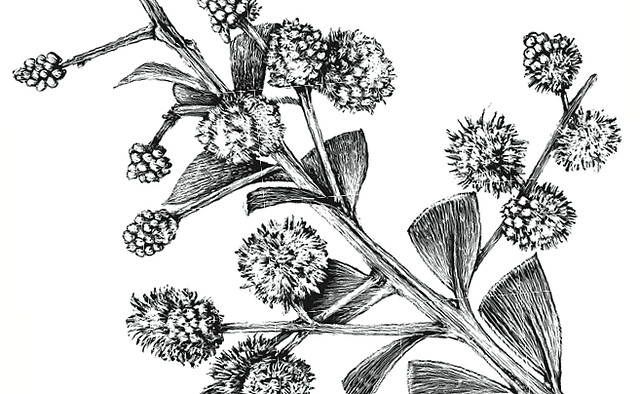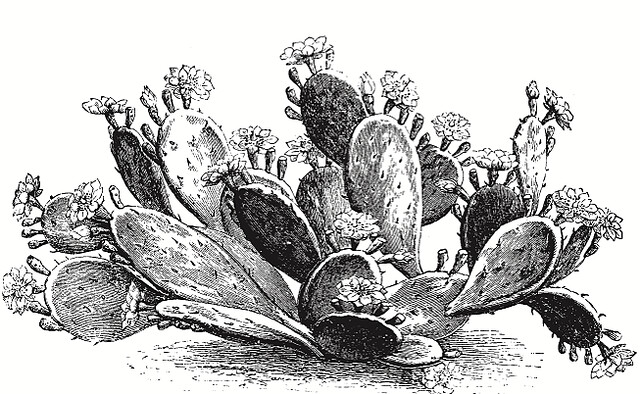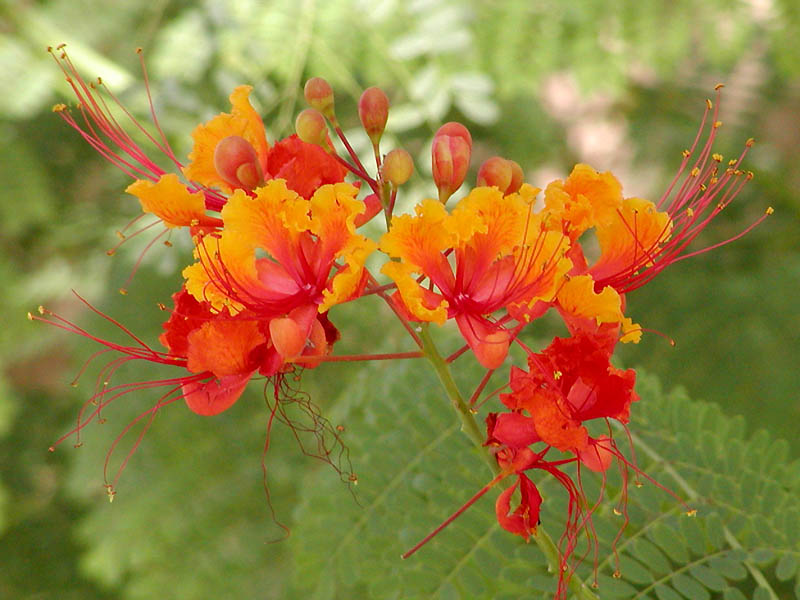Eudicots

Knife-leaf Wattle
Acacia cultriformis


Sorry, there is no photo available. If you have one, please submit
here
.
1 POINT
Fact: The flowers of Acacia cultriformis are safe for humans to eat.
cool, warm, hot
Graphic by O'Reillyanimals.oreilly.com/
Acacia cultriformis, known as the knife-leaf wattle, dogtooth wattle, half-moon wattle or golden-glow wattle, is a perennial tree or shrub of the genus Acacia native to Australia. It is widely cultivated, and has been found to have naturalised in Asia, Africa, North America, New Zealand and South America.[1] A. cultriformis grows to a height of […] read more

Erect Prickly Pear
Opuntia stricta


Sorry, there is no photo available. If you have one, please submit
here
.
2 POINTS
Fact: Opuntia stricta produces yellow flowers and purplish-red fruits.
warm, hot
Graphic by O'Reillyanimals.oreilly.com/
Opuntia stricta is a species of cactus from southern North America, Central America, the Caribbean, and northernSouth America.[1] Common names include erect prickly pear and nopal estricto (Spanish).[2] It is an erect or sprawling shrub up to 2 m (6.6 ft) in height, producing lemon yellow flowers in the spring and summer, followed by purplish-red fruits. Opuntia […] read more

Domesticated Carrot
Daucus carota sativus



2 POINTS
The cultivated carrot is believed to have originated in Afghanistan.
Cool, Warm
Graphic by Amy Hollidaywww.amyholliday.co.uk
Photo by Larsiniocommons.wikimedia.org/wiki/File:CarrotDiversityLg.jpg
The carrot (Daucus carota subsp. sativus; etymology: from Late Latin carōta, from Greek καρωτόν karōton, originally from theIndo-European root ker- (horn), due to its horn-like shape) is a root vegetable, usually orange in colour, though purple, red, white, and yellow varieties exist. It has a crisp texture when fresh. The most commonly eaten part of a carrot is a taproot, although the greens are sometimes eaten as well. It is a domesticated […] read more

Coastal Prickly Pear
Opuntia littoralis


Sorry, there is no photo available. If you have one, please submit
here
.
2 POINTS
• Opuntia littoralis is native only to the Western Hemisphere.
Warm, Hot
Graphic by Pat Knorppp-e-a-k.deviantart.com/
Like all true cactus species, prickly pears are native only to the Western hemisphere; however, they have been introduced to other parts of the globe. Prickly pear species are found in abundance in Mexico, especially in the central and western regions. They are also found in the Western United States, in arid regions in the […] read more

Poinciana
Caesalpinia pulcherrima



3 POINTS
• Caesalpinia pulcherrima is the national flower of Barbados.
Warm
Graphic by Pat Knorppp-e-a-k.deviantart.com/
Photo by Shebs, Stanen.wikipedia.org/wiki/User:Stan_Shebs
Caesalpinia pulcherrima is a species of flowering plant in the pea family, Fabaceae, that is native to the tropics and subtropics of the Americas. Its exact origin is unknown due to widespread cultivation.[1] Common names for this species include Poinciana, Peacock Flower, Red Bird of Paradise, Mexican Bird of Paradise, Dwarf Poinciana, Pride of Barbados, […] read more

Pacific Blackberry
Rubus ursinus


2 POINTS
• Rubus ursinus is also known as the California blackberry/dewberry, Douglas berry, and/or the trailing blackberry.
Cool, Warm
Graphic by Amy Hollidaywww.amyholliday.co.uk
Photo by Walter Siegmunden.wikipedia.org/wiki/File:Rubus_ursinus_10689.JPG
Rubus ursinus is a species of blackberry or dewberry known by the common names California blackberry/dewberry, Douglas berry, Pacific blackberry/dewberry and trailing blackberry. It is native to western North America. This is a wide, spreading shrub or vine-bearing bush with prickly branches that can tip layer to spread vegetatively. Its white flowers may be distinguished from those of other blackberries by their narrow petals. The […] read more